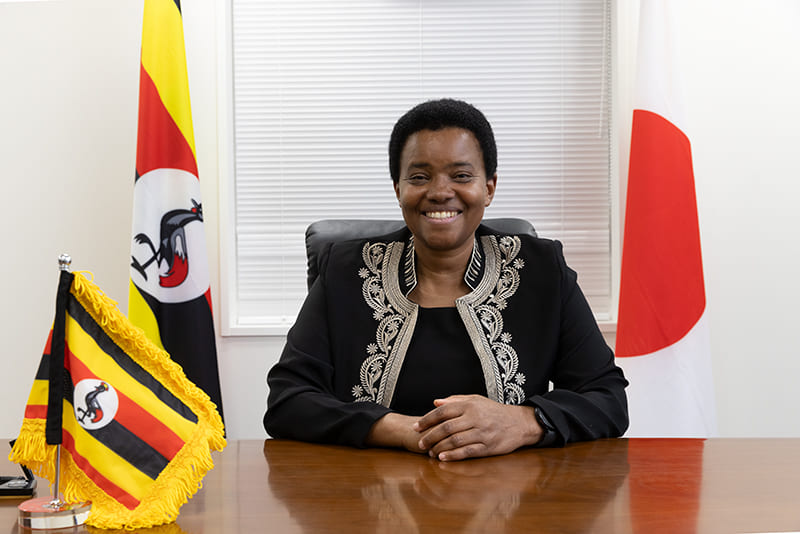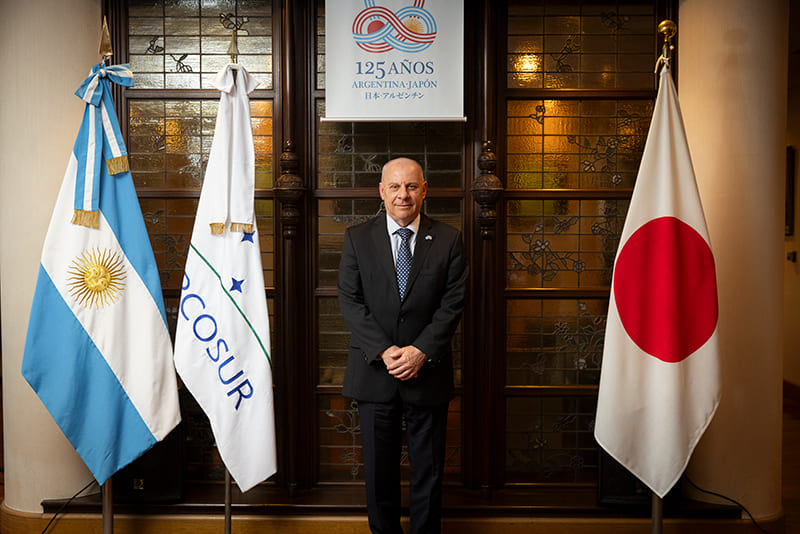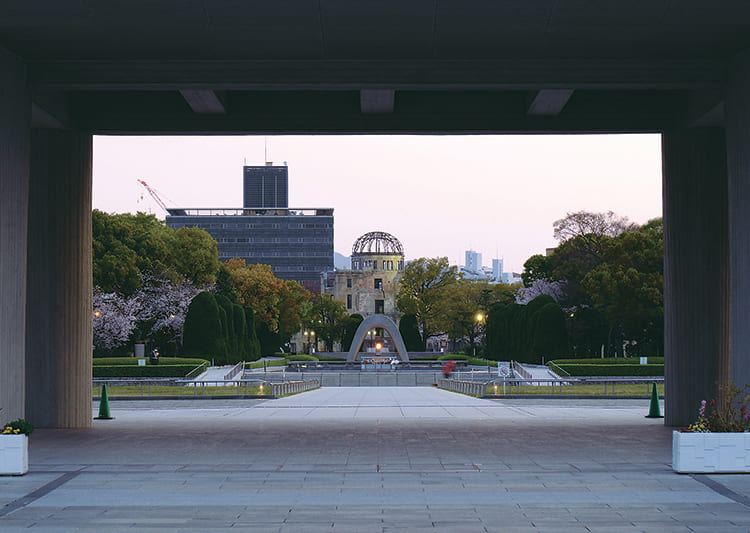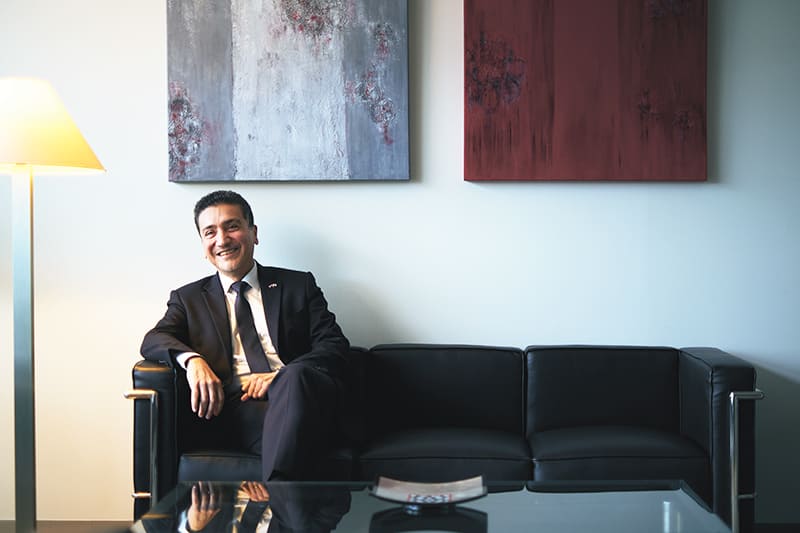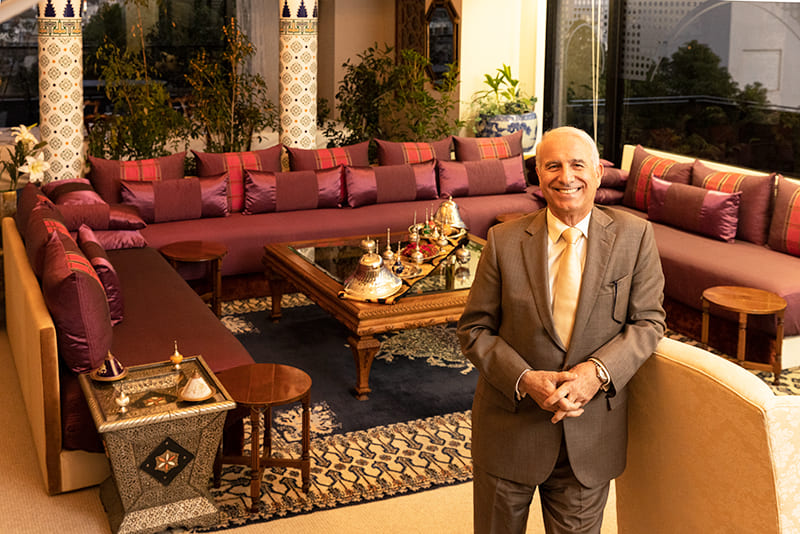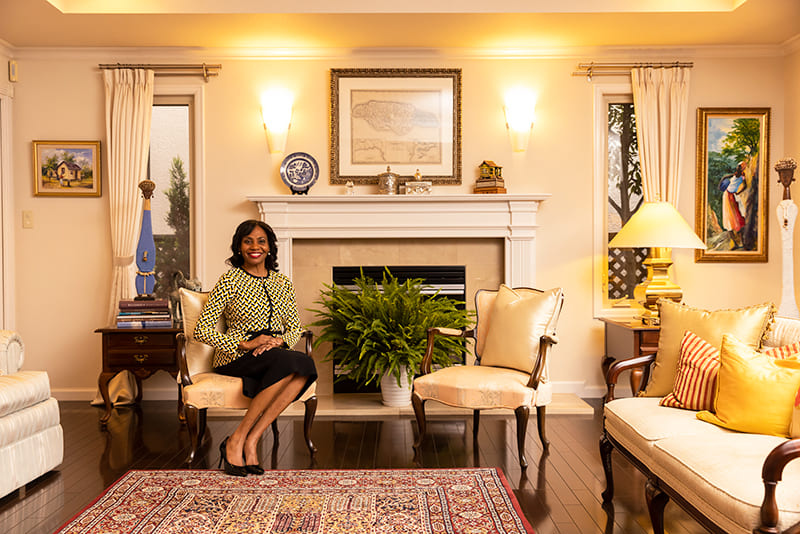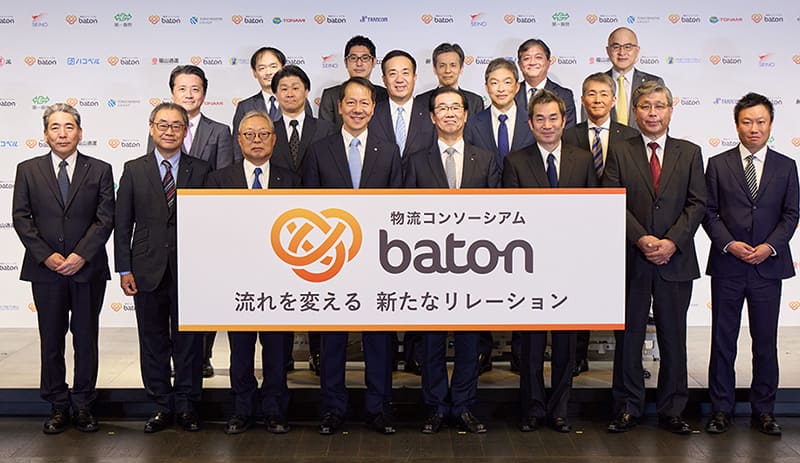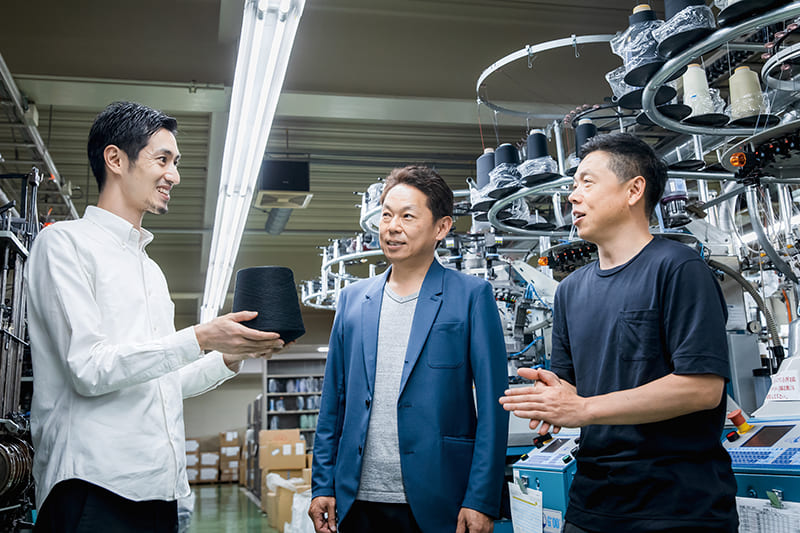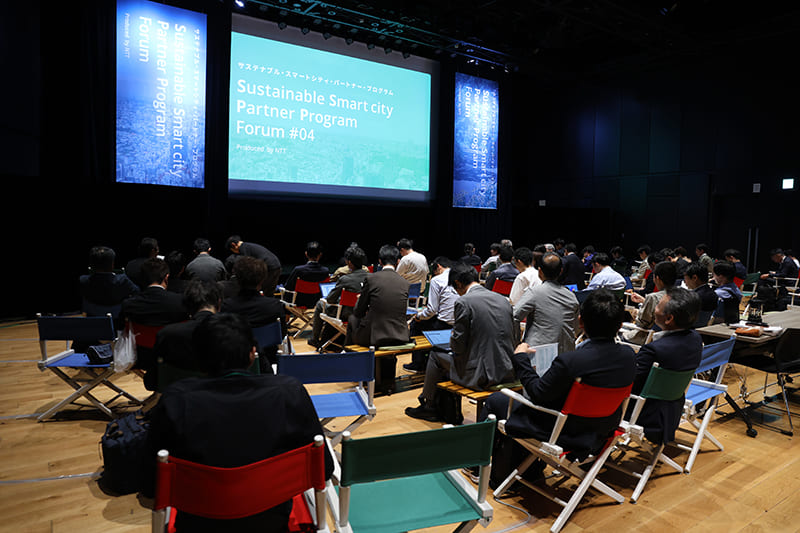December 16, 2022
Turkish envoy’s picks of thoughtful gifts in Japan
TURKEY
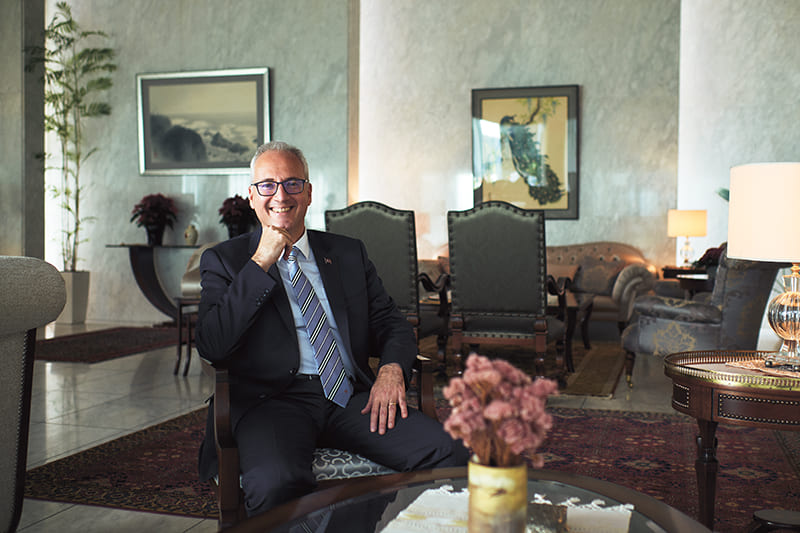
AMBASSADOR KORKUT GUNGEN
Born in Istanbul in 1968. He received his bachelor’s degree in international relations at the Faculty of Political Sciences at the University of Ankara, and a master’s degree in history at the College of Arts, Humanities and Social Sciences at the University of Edinburgh. He also holds a diploma from the NATO Defense College (Rome). He entered the Ministry of Foreign Affairs of the Republic of Turkey in 1989. He worked in various departments responsible for Eastern Europe, Cyprus, NATO, the Organization for Security and Co-operation in Europe (OSCE), disarmament and arms control, South Asia, the European Union, the United Nations and other international organizations, and human rights and humanitarian assistance. He also served in Turkish embassies in Nicosia and Vilnius as well as in the Western European Union, European Union and OSCE delegations. He was the Turkish ambassador to Ecuador. He has been the Turkish ambassador to Japan since March 15, 2021.
Gifts are more than a mere formality — they are a reminder of the special relationship between giver and receiver. The most meaningful aspect of gift-giving is the desire to see the smiles of those one cares for. We visited the Turkish Embassy in Jingumae, in Tokyo’s Shibuya Ward, to hear about recommendations for Japanese gifts from the Turkish ambassador to Japan, Korkut Gungen.
Gungen, stationed in Tokyo since March 2021, said he has learned a lot about Japan through its gift-giving traditions, as gifts are a great way to deepen your understanding of a country’s culture and people. The ambassador introduced three of his favorite gifts he has encountered during his residence in Japan.
His first favorite gift is a titanium cup that was given to him after he first came to Japan. “It is plain, functional, lightweight and durable. Japan has a long history and culture of making excellent metalwork and swords. This cup is a good item that allows you to experience such history and culture as well as contemporary Japanese culture,” he said.
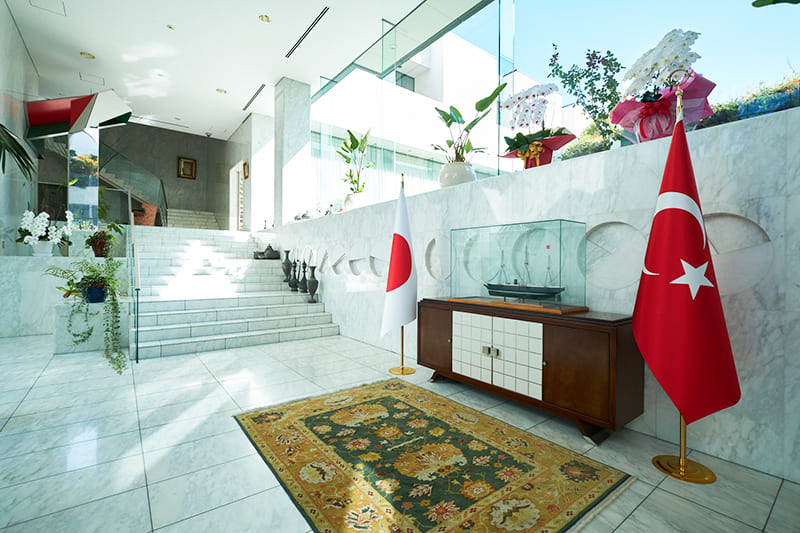
The second item is a ceramic from Miyagi Prefecture, with a warm handmade texture. He loves its deep blue color and form, which demonstrate the gentle warmth of the artisans. He thinks the authentic piece is a very nice gift as a symbol of the close relationship between food and people.
The third is a model of a 1936 Toyota. Gungen said he likes model cars very much. “Toyota sold its first passenger car in 1936,” he said. “I cherish this model because it gives me a sense of the history of Toyota, which has grown over the years to become a world-renowned automaker.”
The ambassador also said he sometimes gives sake cups, fans, chopsticks and yōkan adzuki bean jelly as Japanese gifts to his Turkish friends.
Sake cups are gifted to Turkish friends, giving them a good opportunity to experience Japanese sake. An eye-catching traditional Japanese fan is also a good gift.
One unique fan has wooden ribs of various sizes and is beautifully painted. The more you learn about it, the more profound and enchanting it is.
Chopsticks have long been popular in Japan as a good-luck charm to strengthen bonds of friendship. He likes to offer them as a gift carrying such meaning.

Although there is a custom of eating beans in Turkey, Turks seldom eat sweetened beans. He says it is a good idea to send yōkan sweets made from beans as gifts.
In addition to yōkan, he also likes zenzai (sweet red bean soup) and dango (sweet dumplings). “I love the sight of dango on skewers lined up around a fire,” he said, “as it reminds me of Japanese culture.” The ambassador also goes to soba noodle restaurants with friends to eat his favorite dish, tempura soba.
“The encounter with snow monkeys in Nagano Prefecture was one of the most memorable experiences in my life,” Gungen said. “I will never forget the experience of seeing monkeys bathing in a hot spring in the heavy snow.” He would like to visit Hokkaido and see the Sapporo Snow Festival. The ambassador is also interested in Japanese culture and beliefs and would like to visit the Grand Shrines of Ise someday. He sometimes visits Meiji Shrine near the embassy to give his friends from Turkey a touch of Japanese culture and tradition.
The Republic of Turkey lies in both the Asian and European continents. With its exotic atmosphere and numerous World Heritage sites such as Istanbul and the Cappadocia region, Turkey is a popular tourist destination for visitors worldwide. Turkey’s long history of mixing Eastern and Western cultures has given it unique charms. The Turkish Embassy building is, in a sense, a mixture of Eastern and Western cultures. The Turkish Embassy in Tokyo was completed in 1977 and is the work of architect Kenzo Tange, who influenced a generation of architects worldwide.
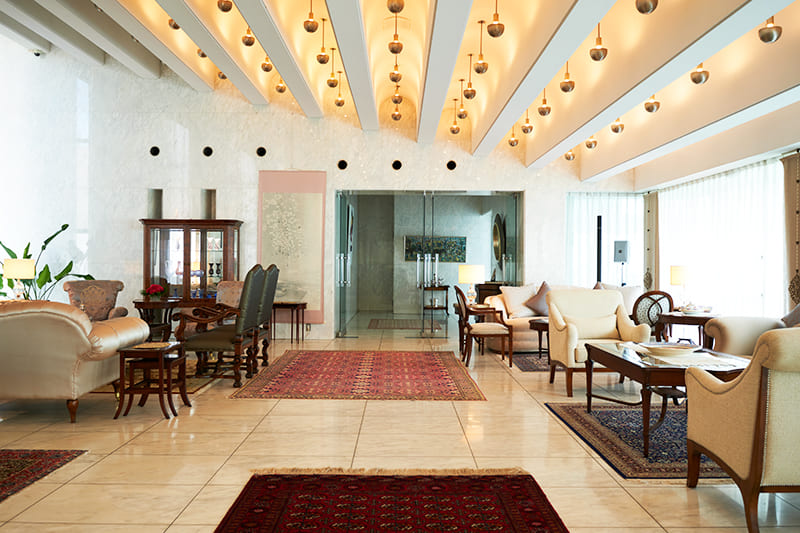
The gate of the embassy opens slowly. After a short walk, you need to go through a security check. Passing through the security gate, before you lies the beautiful white official residence of the Turkish Embassy that Tange produced.
Tange’s representative works include the main building of the Hiroshima Peace Memorial Museum (completed in 1952), Yoyogi National Stadium (1964), the Tokyo Metropolitan Government Building (1991), the Fuji Television Headquarters Building (1996) and many more. In addition to the Turkish Embassy, he designed the Kuwaiti Embassy in the Mita area of Minato Ward, the Bulgarian Embassy in Shibuya’s Yoyogi area and others, signs of the high regard in which he is held by people overseas. Tange is considered to have raised Japanese architecture to a world-class level, having been involved in the design of the royal palace in Saudi Arabia, the Kuwait Airport and numerous urban plans and buildings in Italy.
White marble walls surround the entrance to the official residence. From there, the full form of the architecture cannot be grasped. As you ascend the stairs, you can see that the official residence is built around a central courtyard. Depending on the room, the view changes with the interior and the light. The light from the courtyard reflects off the dazzling marble, making the rooms very bright. Walking around, you lastly return to the entrance, where the flags of both countries watch over a model of the Ertugrul, a frigate whose 1890 goodwill visit to Japan is considered a foundation of Japanese-Turkish relations.
In 1889, the Ertugrul set sail for the port of Yokohama to respond to a visit to Istanbul by Prince and Princess Komatsu in 1887. On its way home in September the next year, the warship encountered a typhoon and struck a reef off the coast of Wakayama Prefecture. A steam explosion caused by flooding of the engine caused the ship to sink, killing 587 crew members, with only 69 survivors. Kii Oshima islanders of Wakayama devoted themselves to rescuing the survivors, and many donations and supplies were received from all over Japan. Survivors returned safely in October aboard two Japanese warships, the Hiei and Kongo, and were welcomed with heartfelt gratitude by the Turkish people. Although far from each other, the two countries were strongly bonded by this incident.
Ninety-five years after the Ertugrul disaster, the Republic of Turkey saved Japanese in a crisis. In 1985, during the Iran-Iraq War, Iraqi President Saddam Hussein announced that he would start attacking even commercial aircrafts flying over Iran in 48 hours. Japanese nationals still in Iran were attempting to leave, but there was no prospect of dispatching rescue planes from Japan, and tensions rose. However, in response to a request from Japan, the Turkish government sent two aircraft to Tehran Mehrabad International Airport. Turkish airlines rescued all 215 Japanese who had remained behind and returned them safely to Japan. The Turkish government prioritized the rescue of Japanese citizens over its own citizens, who had to escape by land. It is said that Turkey’s side later said they were returning the favor for the Ertugrul incident.
Although far from each other, Japan and the Republic of Turkey have been strongly bonded by these two incidents. The bond between the two countries is undoubtedly a gift from our predecessors who bravely faced up to difficult situations.
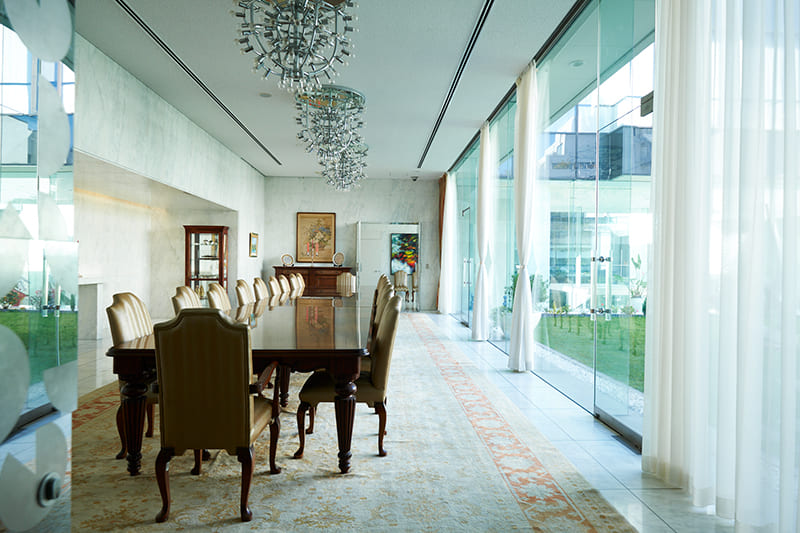
Following an official letter submitted to the United Nations, Turkey was formally recognized as Turkiye at the U.N.
日本製の贈り物から学ぶ、日本の歴史と文化。
コルクット・ギュンゲン駐日トルコ大使は、日本の贈り物を通して日本を学ぶことができると言う。そこで大使が出会ったお気に入りの贈り物3つを紹介いただいた。そのなかの1つ、チタン製のカップには「シンプルで、機能性が高く、軽くて、壊れにくい。日本には鉄器や刀剣をつくりだす長い歴史と文化があります。このカップは、そうした歴史や文化にも触れることができる品です」と語る。
東洋と西洋の文化が交じり合うこの国の様子は、渋谷区神宮前にあるトルコ大使館にも表れている。1977年に竣工したその建物は、世界的に知られる建築家、丹下健三の設計なのである。その大使公邸のエントランス中央には「エルトゥールル号」の模型が飾られていた。
1890年、トルコの軍艦エルトゥールル号は台風に遭遇し和歌山県沖合で沈没した。587名が殉職、生存者はわずか69名。地元民が献身的に生存者の救助にあたった。トルコと日本はこの事件を機に強い絆で結ばれた。この絆は、困難な状況に勇気を持って立ち向かった先人たちからの、まさにかけがえのない贈り物だといえるだろう。
Return to Sustainable Japan Magazine Vol. 19 article list page

